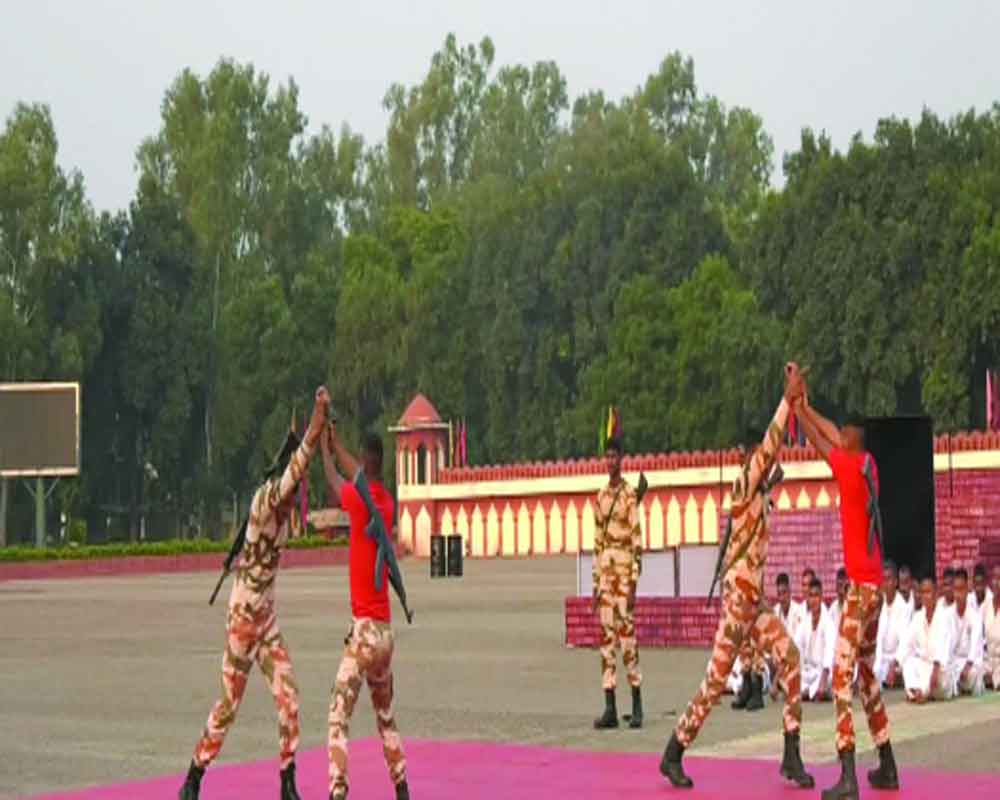After the Galwan incident of 2020, the Indo-Tibetan Border Police (ITBP) that secures the Line of Actual Control (LAC) with China has changed its basic training modules and so far trained as many as 20,000 combatised and non-combatised personnel in a range of new unarmed combat techniques to immobilise and incapacitate the adversaries.
The reskilling move comes after the Galwan Valley incident in eastern Ladakh on May 5, 2020, in which 20 Indian Army personnel suffered casualties at the hands of the Chinese PLA that resorted to medieval tactics to inflict fatal injuries on the Indian troops. The new unarmed combat tactics will comprise 15-20 manoeuvres as part of the basic training course for the new recruits as well as refresher course for the already serving personnel.
The ITBP has a strength of 98,000 personnel.
The unarmed combat techniques will empower the troops to channelise their raw physical power in such a manner that can inflict a deadly punch to the opponent, officials said.
While the basic training course is of 44 weeks’ duration, the refresher courses are for 24 weeks. Both the training courses are compulsory for all ranks up to the level of Commandants.
The new training module comprises 15-20 different fight manoeuvres taken from various martial arts techniques like judo, karate and krav maga (an Israeli martial art, which is derived from a combination of techniques used in aikido, boxing and wrestling) which involve moves like punching, kicking, throwing, joint lock and pinning down an adversary.
The new recruits will undergo three-month training in the martial arts which are being imparted by seasoned ITBP trainers who will expose and hone the new recruits at the Basic Training Centre (BTC) at Bhanu in Panchkula before their induction into the border guarding force.
“The new unarmed combat technique involves both defensive and offensive moves. We brought in this module for our troops last year on the directions of our former director general Sanjay Arora. The combat skills will render the opponent immobile and can also incapacitate them,” ITBP Inspector General Ishwar Singh Duhan said.
Duhan heads the BTC at Bhanu, about 25 km from Chandigarh.
The Chinese PLA troops used stones, nail-studded sticks, iron rods and clubs in carrying out brutal attacks on Indian soldiers after they protested the erection of a surveillance post by China on the Indian side of the LAC at Galwan in eastern Ladakh in June, 2020 leading to 20 casualties on the Indian side while China belatedly claimed only four of its troops were liquidated.
The Russian official news agency TASS had reported that 45 Chinese servicemen were killed in the Galwan Valley clash. An American Intelligence report pegged the number of casualties on the Chinese side at 35.
Duhan said the force has also introduced special training capsules aimed at enhancing the “physical capacity” of the troops deployed in some of the most arduous posts along the LAC who continuously face harsh weather conditions like snow blizzards, avalanches and thin oxygen levels.
“We have now put in place a plan where a troop deployed on the border and higher altitudes will not be deployed for more than 90 days at a stretch. Logistics have been put in place that will ensure timely replacement of troops from the border posts,” the IG said.
The ITBP studied a number of scientific parameters and got inputs from the DRDO’s Defence Institute of Physiology Allied Sciences (DIPAS) that showed how prolonged deployment of personnel can bring about “irreparable damage” to the human body.
It was then decided that troops deployed at high-altitude need to be rotated every three months.
The Galwan incident triggered a lingering border standoff in eastern Ladakh which continues till date in Demchok and Depsang regions, leading to strained bilateral relations between the two countries.
However, the two sides completed the disengagement process last year on the north and south banks of the Pangong lake and in the Gogra area following a series of military and diplomatic talks, Last month, the two sides completed disengagementfrom the Patrolling Point 15 in the Gogra-Hotsprings area.


























